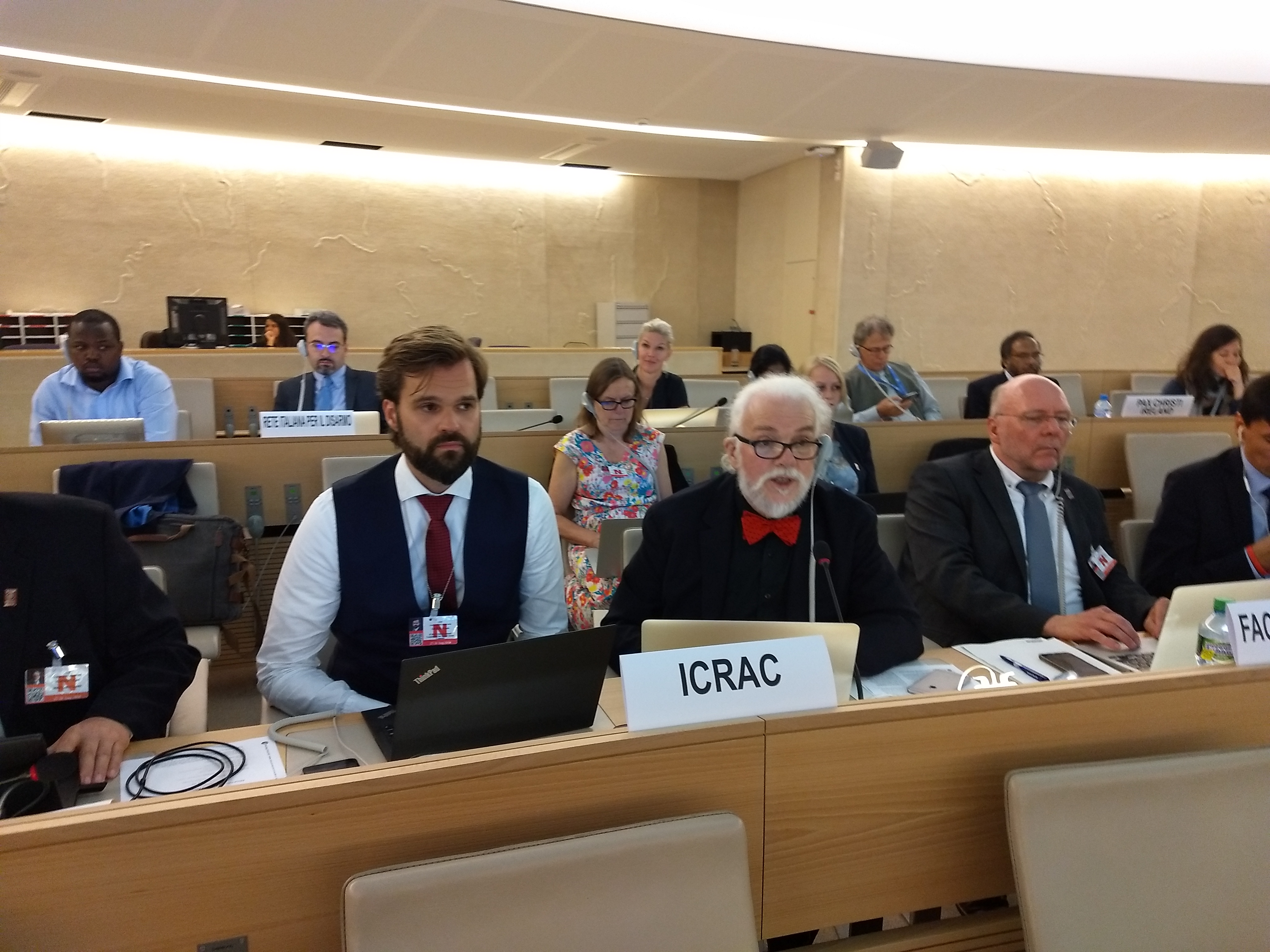As delivered by Prof. Peter Asaro ICRAC has been pleased to hear states shift their focus away from definitions of the technologies of autonomous weapons systems and move towards discussing restriction of their use with regards to how they should be controlled. Of course, by definition, if states wanted genuine meaningful human control of weapons […] Continue Reading
Archive | Front Page
ICRAC statement at the 2018 CCW States Parties Meeting
Posted on 23 November 2018 by Frank Sauer
As delivered by Prof. Roser Martínez Quirante (in Spanish) Mr. President, representatives of nations, members of civil society, During the past 5 years, at the Convention on Conventional Weapons, we have seen a greater understanding of the problems and challenges posed by autonomous weapon systems. The ICRAC is satisfied with the general consensus on […] Continue Reading

ICRAC general statement at the August 2018 CCW GGE
Posted on 29 August 2018 by Frank Sauer
As delivered by Prof. Noel Sharkey Mr Chairman, Over the last 5 years at the CCW we have seen an increased understanding of the issues and challenges posed by autonomous weapons systems. ICRAC is pleased with the general consensus that we must retain human control over weapons systems, in particular, over the critical functions of […] Continue Reading

ICRAC statement on the human control of weapons systems at the August 2018 CCW GGE
Posted on 29 August 2018 by Frank Sauer
As delivered by Dr. Elke Schwarz Thank you, Mr Chairperson, The International Committee for Robot Arms Control is pleased to see states move away from the use of broad, brush-stroke terms such as in-the-loop, on-the-loop, the wider loop, human oversight, and appropriate human judgement. We agree with the working paper from Estonia and Finland that […] Continue Reading

ICRAC statement on the human control of weapons systems at the April 2018 CCW GGE
Posted on 11 April 2018 by nsharkey
International Committee for Robot Arms Control Statement to the UN GGE Meeting 2018 Delivered by Prof. Noel Sharkey, on 11 April 2018 Mr Chairperson, We have been very pleased with this morning’s session as states begin to contemplate a move towards policies on the human control of weapons systems. On a pedantic note: we cannot […] Continue Reading

Short ICRAC Statement at the April 2018 CCW GGE
Posted on 10 April 2018 by nsharkey
International Committee for Robot Arms Control Statement to the UN GGE Meeting 2018 Delivered by Prof. Noel Sharkey, on 10 April 2018 Mr. Chairperson, There have been very useful and interesting discussions this morning. I speak here as chair of an academic NGO: the International Committee for Robot Arms Control (ICRAC) and as a member […] Continue Reading

ICRAC Statement at the April 2018 CCW GGE
Posted on 09 April 2018 by Peter Asaro
International Committee for Robot Arms Control Statement to the UN GGE Meeting 2018 Delivered by Dr Thompson Chengeta, on 9 April 2018 Mr. Chairperson, I speak on behalf of the International Committee for Robot Arms Control [ICRAC], a founding member of the Campaign to Stop Killer Robots. Ambassador Gill, we thank you for your important […] Continue Reading
![2015-04-14-10.16.53-1024×768[1] 2015-04-14-10.16.53-1024x768[1]](https://i0.wp.com/www.icrac.net/wp-content/uploads/2018/04/2015-04-14-10.16.53-1024x7681.jpg?fit=1024%2C768&ssl=1)
Unpriming the pump: Remystifications of AI at the UN’s Convention on Certain Conventional Weapons
Posted on 08 April 2018 by Lucy Suchman
*Originally published on the “Robot Futures Blog” In the lead up to the next meeting of the CCW’s Group of Governmental Experts at the United Nations April 9-13th in Geneva, the UN’s Institute for Disarmament Research has issued a briefing paper titled The Weaponization of Increasingly Autonomous Technologies: Artificial Intelligence. Designated a primer for CCW […] Continue Reading
NYT warns of killer robot gap
Posted on 29 September 2013 by Mark Gubrud
New York Times science writer John Markoff reported on Sept.23 that the US military “lags” in development of unmanned ground vehicles (UGVs), which is sort of true if you compare the status of UGVs with that of unmanned air vehicles (UAVs). The real reason, as Markoff acknowledges, has to do with the technical difficulty of locomotion on […] Continue Reading

US killer robot policy: Full speed ahead
Posted on 22 September 2013 by Mark Gubrud
In November 2012, United States Deputy Defense Secretary Ashton Carter signed directive 3000.09, establishing policy for the “design, development, acquisition, testing, fielding, and … application of lethal or non-lethal, kinetic or non-kinetic, force by autonomous or semi-autonomous weapon systems.” Without fanfare, the world had its first openly declared national policy for killer robots. The policy has […] Continue Reading







